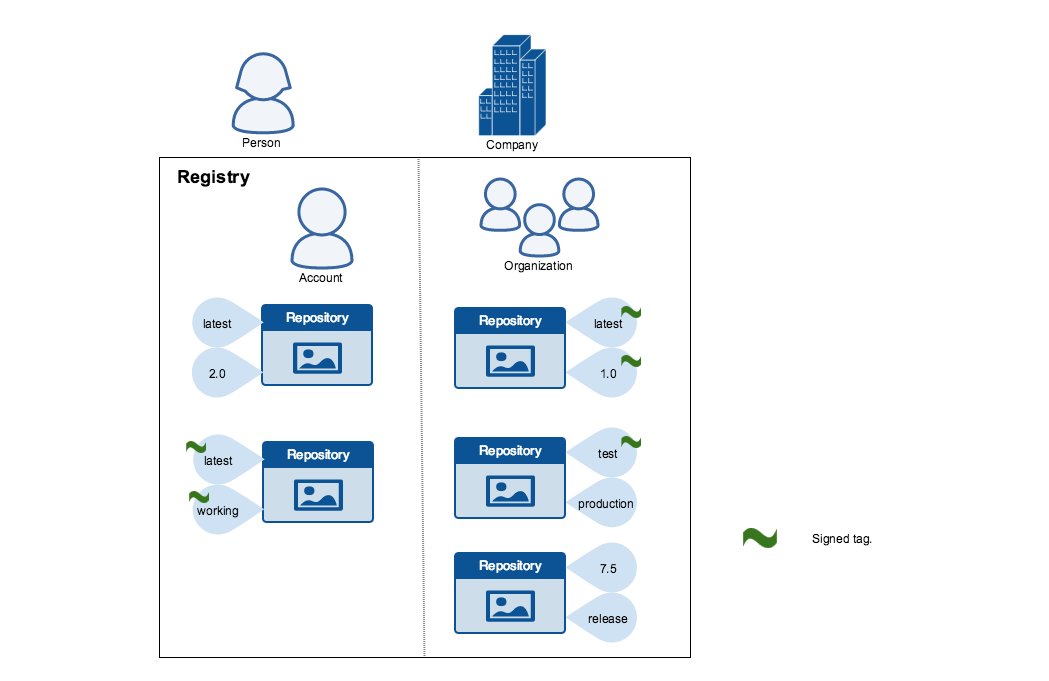Docker Content Trust¶
When transferring data among networked systems, trust is a central concern. In particular, when communicating over an untrusted medium such as the internet, it is critical to ensure the integrity and the publisher of all the data a system operates on. You use Docker Engine to push and pull images to a public or private registry. Docker Content Trust (DCT) gives you the ability to verify both the integrity and the publisher of all the data received from a registry over any channel.
Docker Content Trust provides the ability to use digital signatures for data sent to and received from remote Docker registries. These signatures allow client-side or runtime verification of the integrity and publisher of specific image tags.
Through DCT, image publishers can sign their images and image consumers can verify the signatures of the images they pull. Publishers could be individuals or organizations manually signing their content or automated software supply chains signing content as part of their release process.


